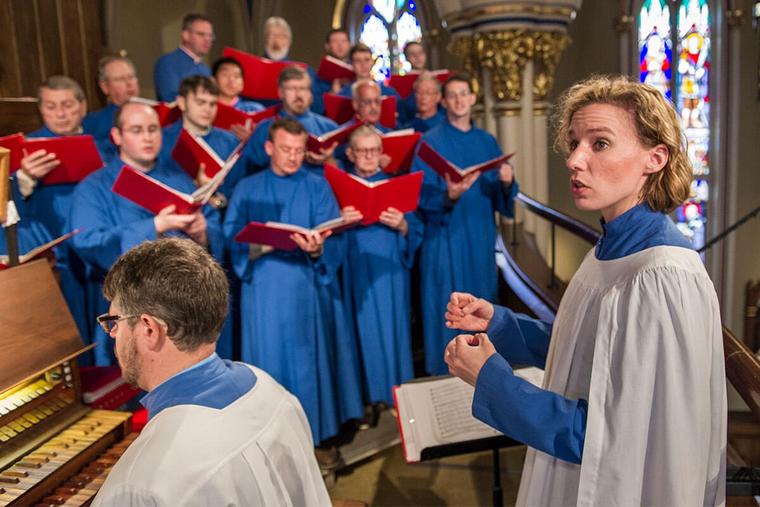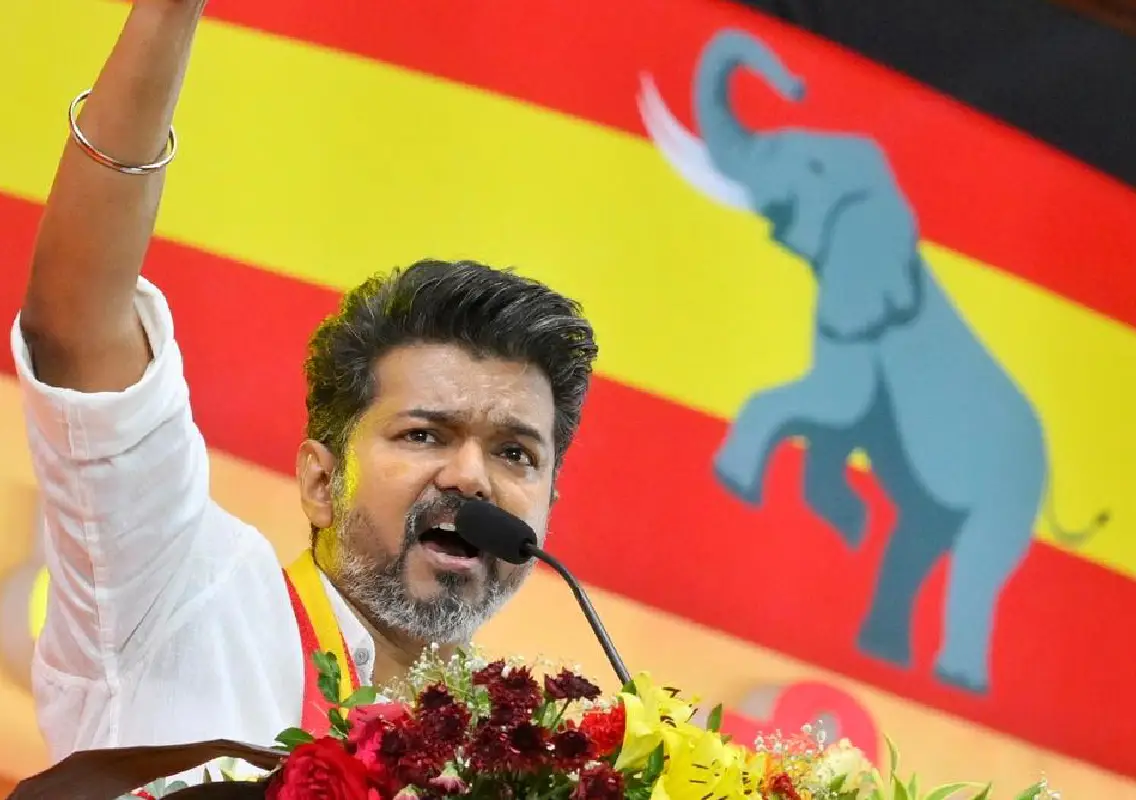Copyright ncregister

On Oct. 23, the Higher Word Orchestra and Choir filled St. Anthony of Padua Church in Soho, Manhattan, with its All Hallows’ concert, lifting listeners’ minds to heavenly things, as St. Paul exhorts in Philippians 4:8. In the century-old Romanesque church, beneath the dim glow of the rose window, shafts of light cut through a thin haze as the musicians performed Allegri’s Miserere mei, Deus, Fauré’s Pie Jesu, Mozart’s Requiem, Beethoven’s Fifth Symphony, and other sacred works whose harmonies rose into the vaults like incense, drawing a congregation of New Yorkers into a contemplative quiet that became, almost imperceptibly, prayer — a meditation on mortality and the passage from darkness to light that lies at the heart of the Church’s celebration of All Hallows’ Eve. This weekend, on Nov. 1, those same themes of remembrance and hope will rise again in Baltimore — this time beneath the great dome of the Baltimore Basilica on Cathedral Hill, where the Basilica Schola Cantorum will perform Mahler and Duruflé at the All Saints’ concert. Across the country, a growing number of sacred music apostolates are rediscovering this ancient vocation, using beauty to draw hearts toward God. St. John Paul II, in his 1999 “Letter to Artists,” affirmed this essential missionary function: “The link between good and beautiful stirs fruitful reflection. In a certain sense, beauty is the visible form of the good, just as the good is the metaphysical condition of beauty.” As 20th-century theologian Hans Urs von Balthasar masterfully articulated in his magnum opus, The Glory of the Lord: “Our situation today shows that beauty demands for itself at least as much courage and decision as do truth and goodness, and she will not allow herself to be separated and banned from her two sisters without taking them along with herself in an act of mysterious vengeance. We can be sure that whoever sneers at her name, as if she were the ornament of a bourgeois past, whether he admits it or not, can no longer pray and soon will no longer be able to love.” The Catechism of the Catholic Church underscores these themes in Paragraph 1156, describing the Church’s treasury of sacred music as “a treasure of inestimable value, greater even than that of any other art,” precisely because “as a combination of sacred music and words, it forms a necessary or integral part of solemn liturgy.” The philosopher Plato once observed that music “imitates the impulses of the soul,” and as composer Richard Wagner later wrote, it is “nature transformed into love.” Yet “‘music’ is never some impersonal, abstract energy; it is ‘performed’ by musicians with all their distinctive individualities,” as the late Catholic philosopher Josef Pieper reminds us (Only the Lover Sings, 45). The apostolates that have taken up this task of sanctifying culture through art and music, shaping the “wondrous material” of their own humanity, as John Paul II put it, “render an exceptional social service in favor of the common good.” Through sacred music — Classical, Gregorian and Polyphonic alike — these apostolates reveal that music is not an accompaniment to mission. It is mission. Catholic Sacred Music Project Peter Carter, director of sacred music for the Aquinas Institute and co-author with Cardinal Robert Sarah of The Song of the Lamb (Ignatius Press, 2025), leads the Catholic Sacred Music Project, a growing apostolate forming leaders in liturgical music. “The encounter with beauty,” Carter told the Register, “is ultimately an encounter with He who is Beauty, present through something that is serving as an intermediary for the encounter with beauty.” Carter explained, “St. Paul tells us that ‘For now we see through a glass, darkly; but then face to face’ (1 Corinthians 13:12), and I think that music in particular has the power to provide one of the clearest glimpses of the beauty of God on this side of paradise.” The Catholic Sacred Music Project’s apostolate includes choral festivals, workshops and summer institutes on composition, conducting and choral instruction under the guidance of world-renowned faculty such as Sir James MacMillan — each designed to cultivate musician-apostles who can lead projects, conduct scholas, compose with fidelity to Catholic doctrine, and evangelize through beauty. In this way, Carter’s work becomes self-multiplying: By forming leaders, he forms future formators. Higher Word Another expression of evangelizing beauty can be found in Higher Word, a Catholic organization with an all-Christian choir and orchestra under the leadership of Spencer McIntosh, Higher Word founder; Christa Dalmazio, music director; and Jacob Beranek, chief conductor. The 60-member ensemble communicates the beauty of the faith through storytelling and performance, drawing from the Church’s rich musical treasury. Each event — whether an intimate string quartet or a full orchestral concert — follows the singular theme of lifting the mind and heart to God through beauty, goodness and truth. Director Dalmazio points to the Vatican’s 2006 Plenary Assembly on Culture, which identified the via pulchritudinis — the “way of beauty” — as the most universal and effective path for evangelizing hearts in a postmodern world. Pointing also to Pope Paul VI’s “Address to Artists,” Dalmazio reiterated, “The most uniting thing in our polarized culture is beauty in music. People naturally unite through shared stories, language, virtue, and most of all through shared music and songs to bring joy, fulfillment and purpose in enduring the hardships of life.” Dalmazio recalled when, after a Novus Ordo Mass in Latin that she directed and sang with St. Hildegard’s chants for her feast day, a parishioner commented that he’d never before then experienced a Mass in which he was able to fully clear his mind to be present in prayer with the Lord because of the beauty of the Latin chants and the atmosphere that was created. Drawing on St. Thomas Aquinas’ understanding of beauty as integrity, proportion and radiance, Dalmazio reflected that the most glorious music embodying these qualities — pieces she has sung and conducted with the Higher Word Orchestra and Choir — has left what she called “a clear imprint of light and hope” on her spiritual life. Benedict XVI Institute Our culture’s loss of the sense of the sacred is countered by the Benedict XVI Institute for Sacred Music and Divine Worship, which describes its mission as “opening the door of beauty to God.” The twofold strategy is: “providing practical resources for more beautiful and reverent liturgies” and “energizing a Catholic culture of the arts,” as stated on the website, through retreats, Masses, collaborative projects, and the Reverent Liturgy Project. Maggie Gallagher, the executive director of the Benedict XVI Institute for Sacred Music, told the Register: “The Church invented classical music and was for centuries its principal patron. Reclaiming and renewing this patrimony is central to more reverent liturgy and evangelizing in our sometimes-anti-rational secular culture.” The institute, which includes as patrons Archbishop Salvatore Cordileone, a well-known stalwart defender of the Church’s liturgical heritage and the ars celebrandi in the liturgy, is hopeful. “The greatest art, the greatest liturgy the Catholic Church has ever produced, is yet to come.” Catholic Institute of Sacred Music Founded at St. Patrick’s Seminary in Menlo Park, California, the Catholic Institute of Sacred Music serves as an educational apostolate dedicated to restoring beauty in the Church’s worship. Its mission is to “form leaders in sacred music for service in Catholic parishes and schools.” Through its graduate courses, workshops and chorister programs, the institute trains clergy and musicians to understand sacred music as a participation in divine order. In doing so, it carries forward one of the Church’s most ancient and enduring forms of evangelization: teaching through beauty. Jennifer Donelson-Nowicka, founding director of the Catholic Institute of Sacred Music, reflected on how beauty itself is evangelical: “A piece of music which is splendorously beautiful immediately impresses itself upon the senses as something worthy of attention because of its excellence. … It is a warm invitation to encounter God’s love.” Donelson-Nowicka also noted how “beauty in music is a friend of the interior silence necessary for contemplative prayer.” She added that, when a piece finishes, “the reaction is not applause at the human achievement of it, but prayer. There is no greater gift to a musician than his participation in helping people pray and encounter God.” The Baltimore Basilica Built on Baltimore’s historic Cathedral Hill, the Baltimore Basilica is both a musical and architectural masterpiece. As America’s First Cathedral, it holds a preeminent place in the nation’s liturgical and musical heritage and remains a locus of evangelization for the nation. Designed by Benjamin Henry Latrobe, architect of the U.S. Capitol, the basilica’s neoclassical dome creates a luminous and resonant acoustic that inspires musical artistry. The church’s thriving parish life is matched by a sacred-music program that offers the best of the Church’s musical repertoire, supported by one of the largest pipe organs on the East Coast. “The mission of the Baltimore Basilica is to give people an encounter with God, the kind of experience that opens the mind and heart to the reality that the love of God is here for us in this world,” said Father Brendan Fitzgerald, the basilica’s rector. “Beauty is one of the very best ways to give people that kind of encounter.” That mission comes alive through the collective voice of the Basilica Schola Cantorum, the parish’s resident ensemble of professional and volunteer musicians under the direction of Sam Rowe, director of sacred music. The schola leads the music at liturgies throughout the year and anchors the basilica’s sacred music concert series, which performs the masterworks of sacred music in a sacred space that gives sound to the Church’s living tradition. “Sacred music remains a common term between us and secular culture,” Father Fitzgerald observed. “Beauty still possesses the power to attract people to what is sacred, even when those who are attracted lack faith. These beautiful pieces of music — they came from somewhere, from a world and a culture built up through faith and grace. And maybe, just maybe, for the unbeliever who comes to these concerts, they will discover that the origin of all beauty really is God.” That vision will find poignant expression in the basilica’s All Saints’ Concert on Nov. 1, featuring Mahler’s Titan Symphony No. 1 and Duruflé’s Requiem. Both works, Director Rowe explained, trace the human passage through sorrow to glory — through death to resurrection: “Duruflé’s Requiem sets them in a way that will be immediately recognizable to the faithful but is also extremely deft and sophisticated for even the shrewdest classical music enthusiast. Mahler’s work, while not explicitly having anything to do with the feast, is still concerned with eternity. The last movement, with its stormy beginning, deeply emotional middle section and triumphant ending, takes the listener on a tempestuous journey through life and death itself.” “What better day is there for an encounter with God through beauty,” said Father Fitzgerald, “than a day on which our Church celebrates the horizon of human possibilities in Christ: sainthood?” The Vocation of Beauty From the Catholic Sacred Music Project’s formation of young leaders to Baltimore Basilica’s sonal witness atop Cathedral Hill, sacred music continues to be one of the Church’s most powerful languages of evangelization. Every schola, parish choir and musician striving for reverence and excellence takes part in that same mission of making the love of God audible in the world. Mary Catherine Levri, a seasoned musician, member of the musical faculty at the University of Notre Dame, and past president of the Society for Catholic Liturgy, captures this truth: “Each encounter with beauty is personal, unique, and, I think, ordained by Providence. For a member of a congregation to be moved by a piece of sacred music is a grace, and in this sense, the sacred musician is nothing but an unworthy instrument of God, communicating the beauty of the Paschal Mystery to the faithful.” Because the beauty of sacred music “grips the whole person through the heart,” she told the Register, “the practice of sacred music is one of the most effective tools we have for drawing people into the mysteries of the faith. Catholics should passionately and proudly claim our inheritance of artistic beauty as one of the most wonderful ‘nets’ we have for catching souls, second only to that wondrous net of the glorious witness of the saints.”



